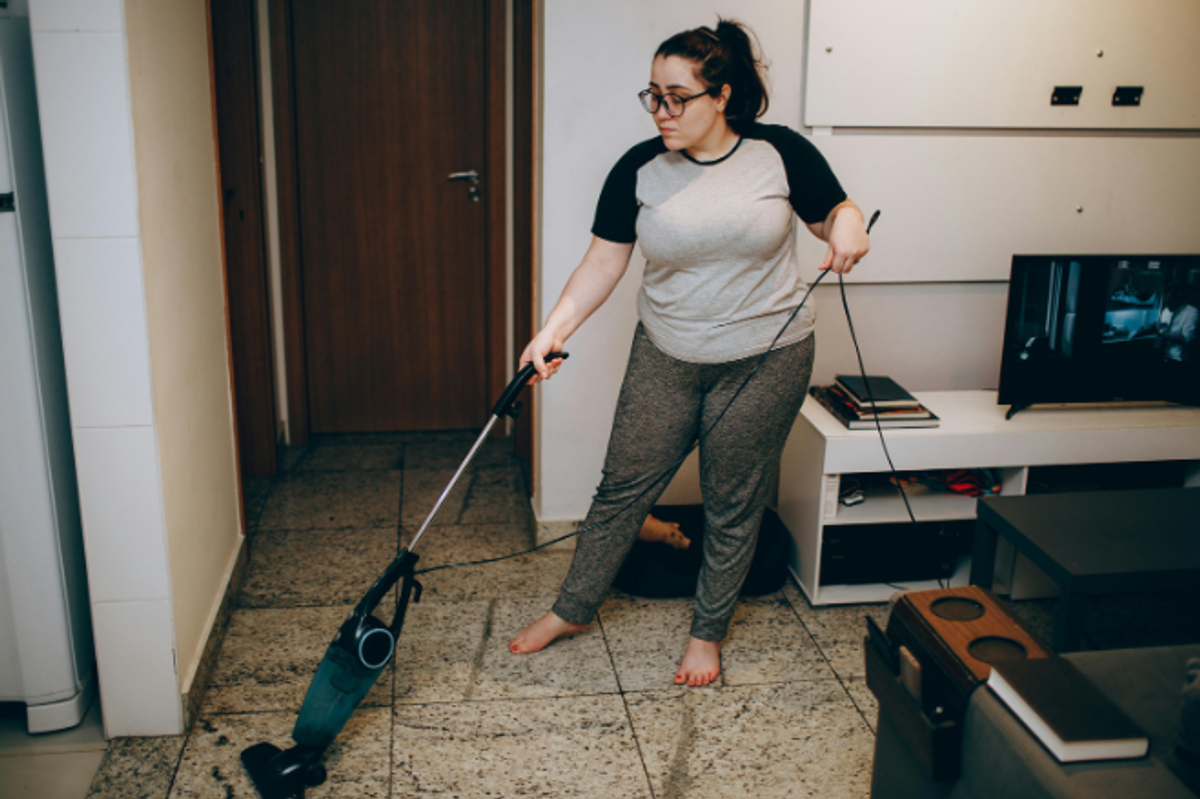You're minding your own business, scrolling the feed, liking pics of toddlers at the pumpkin patch, and suddenly there it is:
"I'm glad that illegals are facing consequences! Illegal immigration is ILLEGAL! I can't afford my doctor bills, why should I pay theirs?"
Oh. Hi, Aunt Linda.

You know it's your job to collect her, right? (That's "collect" in casual vernacular meaning "make her stop" or "go pick her up and get her under control.") You're supposed to blow your ally whistle and snatch Aunt Linda so she can't do anymore harm.
But then this debate happens in your head:
She's wrong and she needs to know how wrong she is!
Whoa whoa whoa. She's from a different time.
Tell her off, right there on her Facebook page!
I don't want to offend her, though. And hey, everybody starts somewhere.
That's white supremacy talking! Unfriend her! No mercy!
Be kind — try to understand her point of view!
It's a tough call. You know you should deal with Aunt Linda. But how?
How do you wade through the swamp of warring voices in your head? How do you collect Aunt Linda?
Fear not: We're here to guide you through it. Stop chewing your fingernails, and let's get to work.
1. Know your goal.
First, let's redefine "collect."
It's not your job to save Aunt Linda's soul. It is your job to make her uncomfortable about casually demonizing immigrants on the internet.
When you collect folks, don't worry about being perfect. Your goal is to speak up, challenge racist ideas, make mistakes, learn from them, and keep going.
Think of yourself as a human Taboo buzzer when a friend, relative, or back-asswards stranger strays into unacceptable territory. It's not OK, Aunt Linda!
2. Be patient. Invest in the "half-wokes."
It takes time to help people empathize. Don't expect a sudden transformation.
Aunt Linda might not change today, but guess who else read her post? A whole crew of half-woke white people who see that her post was cruel and racist but also don't fully understand the politics of why. They have good intentions but have not yet learned that intentions don't really matter unless they act on them.
Invest your time and energy in those people. Some of them will get defensive and storm off. But others will grow. Remember that when you reply to Aunt Linda, those people are reading (and learning).
3. Get angry.
Yes. Aunt Linda has just said something really offensive. You get to be pissed off about that!
Anger is the appropriate emotional response to witnessing the systematic and interpersonal dehumanization, humiliation, and violence against other human beings.
4. But don't get too angry.
Boy oh boy, does it feels good to lay into a racist without mercy! The problem is that's not your anger.
You're angry with Aunt Linda on behalf of other people — the people of color she wants to deport who have to hear her say "all lives matter." And the madder you get, the better you feel. You are genuinely mad, but be honest: You're also kind of impressed with yourself.
Recognize what exactly you're doing here. You're stealing anger rooted in someone else's suffering and harvesting its fruit to feed YOUR pride. If you're getting angry about other people's pain, then your anger had better be serving those people, not yourself. So yes, get angry. But never forget whose anger it is.
5. Hit the books.
The tools of your trade are facts, stats, knowledge, and more facts. Here's an example of a helpful response:
"Aunt Linda, it's a common assumption that undocumented immigrants drain public resources. But actually, most undocumented immigrants pay taxes and contribute to social security, are employed, and aren't even eligible for most social safety nets. Check out this article: 'Do Undocumented Immigrants Overuse Government Benefits?' Or this one: 'Immigration Myths Debunked.'"
Not only will you be rooting your argument in fact, but you'll also be sharing resources with those other conversation watchers who can turn around and share them with their Aunt Lindas, too.
Include a couple of salient details in your comment; don't just post a link as your entire response. And never forget to check your sources.
6. Assume everyone is capable of learning.
Many of us white allies make excuses for people who say racist things — "She's so sheltered" or "He grew up in the South." These excuses help you blame a person's racist actions on something else, effectively claiming they're irreversibly racist. Not only is that untrue, but it says something about you, too.
What you might not realize is that you're side-stepping and, worse, enabling. Don't get it twisted: Making excuses for racists turns you into an apologist.
Every person who can type something racist on the internet is also capable of typing something not racist on the internet. Stop inventing excuses for them.
7. Remember you're not anyone's hero.
Collecting people is highly visible and often dramatic. As these conversations get heated, responses get more poetic, powerful, visceral, and staunch. Sometimes you'll type or say something transcendently awesome, and you'll feel like anchorman Ron Burgundy.

When you catch yourself trying to get in the spotlight, stop.
"It's obvious to everyone, it creates aggravating extra work for the people of color you want to help, and it's a transparent bid for everyone to recognize that you are one of the good ones," explains Mia McKenzie of Black Girl Dangerous.
Stay focused. Your job isn't to show off how great an ally you are; it's to show Aunt Linda that what she said was wrong and to protect the people she's hurting.
Along those lines, if you're ever in that conversation with Aunt Linda and your friend Ana hops on to offer her perspective as a daughter of immigrants, your job just changed. Your turn to talk has ended; you are now the "liker" of everything Ana says and the bodyguard who protects Ana's space to speak.
Remember, you are not the hero, and this isn't about you. Stay focused.
8. Be brave, and don't give up.
If you're doing this right, Aunt Linda will get mad at you, you will lose friends, and you will get a reputation for being an evangelical anti-racist. But if you are as anti-racist as you like to think you are, then you won't be scared of the consequences of speaking up about it.
You still have it easier than people of color because you still get to choose when and where you engage in conversations about race. If you're tired, imagine how exhausted people of color must be. If you feel hopeless, keep going as if you had no other choice because the people you're fighting for do not.
Show up. Speak up. Go collect your racist aunt. That's what integrity looks like.
This story was originally published on Medium and is reprinted here with permission.




 Beaver on riverbank.
Beaver on riverbank.  Pbs Nature Swimming GIF by Nature on PBS
Pbs Nature Swimming GIF by Nature on PBS  An actual beaver dam on the now-thriving Price River
An actual beaver dam on the now-thriving Price River 
 A child on an iPad.
A child on an iPad.  A mom showing her child how to play the drum.
A mom showing her child how to play the drum.  A mom scolding her son.
A mom scolding her son.  A mom guilt-tripping her daughter.
A mom guilt-tripping her daughter.  A teacher establishing rules to her class.
A teacher establishing rules to her class. 


 A woman ironing clothes late at night.via
A woman ironing clothes late at night.via  A woman doomscrolling at night.via
A woman doomscrolling at night.via 
 Urban raccoons have shorter snouts than rural ones, study shows.
Urban raccoons have shorter snouts than rural ones, study shows.